the pilbara is an amazing place with stunning views; have you seen my tiny planet, i think that captures the landscape so well? the true wealth of the pilbara, however, lies under the surface. that goes for the iron ore that is mined here, and for which the pilbara is probably best known, but it also goes for karijini, the national park that covers part of it.

there is an interesting dynamic here: some years ago a rich iron ore deposit was found within the boundaries of the karijini national park. no prices for guessing what happened next: the national park boundaries were of course re-drawn and suddenly the mine was conveniently located outside the park.

have a look at the karijini map and you’ll see the carveout for the marandoo mine. in a way that’s not surprising: 80% of australia’s known iron ore deposits are located in the hamersley ranges.

it is impossible to escape the iron: everything around here is red, rusty. and even for those who do not pay a visit to one of the dozen or so mines rio operates in the area there is a way to get up close to the elements that shape the pilbara.
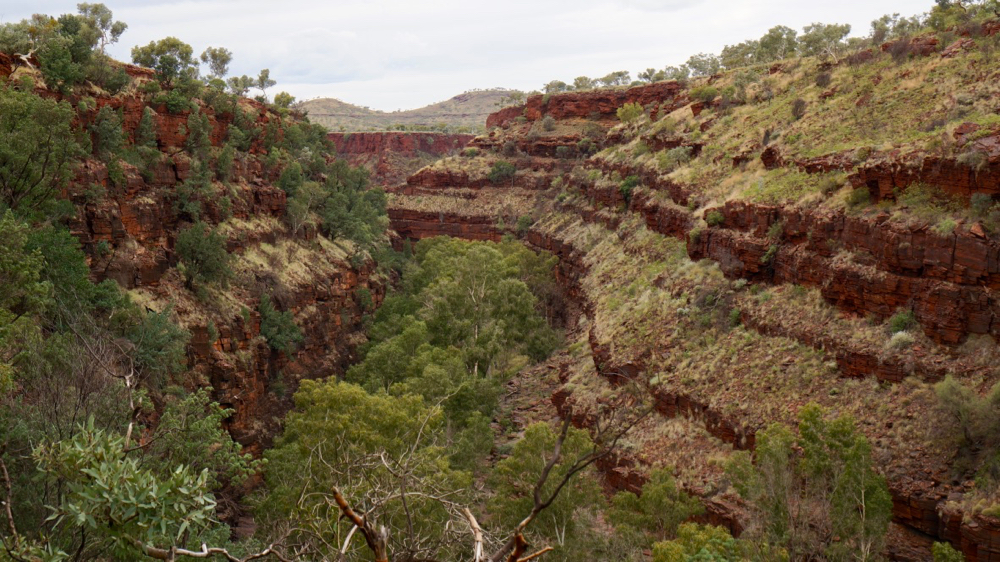
most visitors to karijini come to see the gorges. dales camp ground where we stayed is actually located near one of them, not surprisingly also called dales.
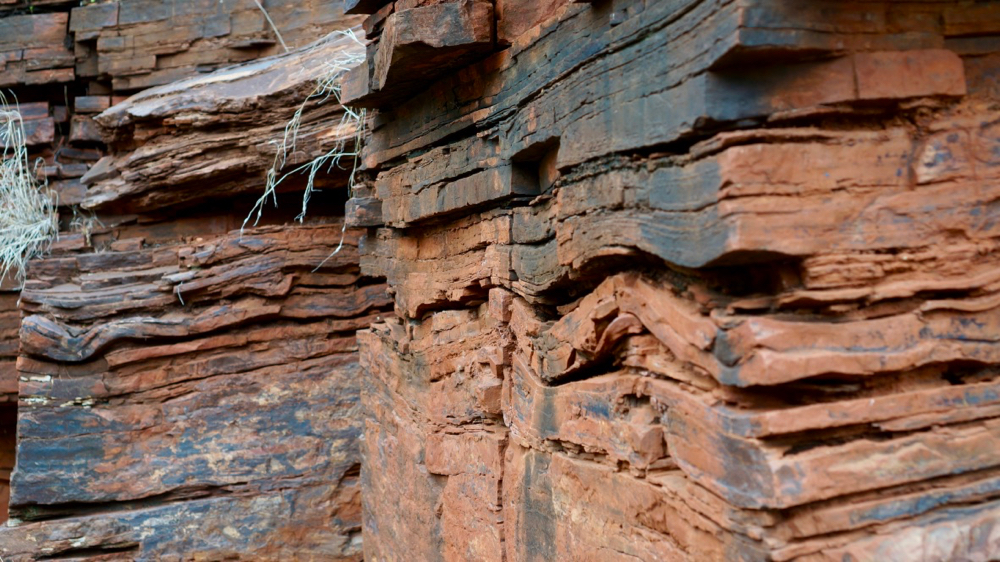
everything is rusty, almost as if the red dirt from the surface was being washed down the sides of the gorges. the truth is the stone itself rusts, which is how the deposits were located in the first place.
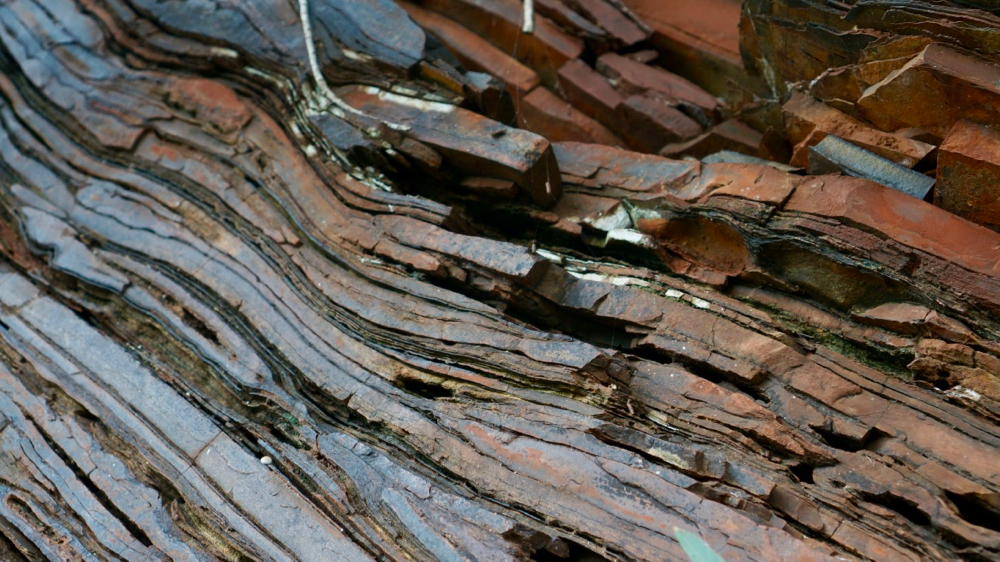
the signs of the forces that shaped the pilbara are also clearly visible.
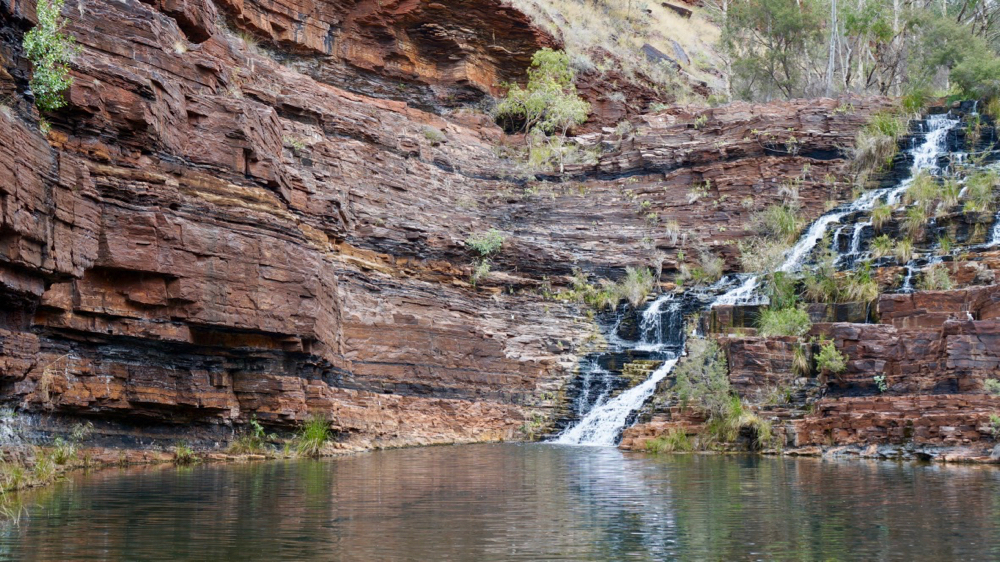
fortescue falls in dales gorge. just a nice little fall into the pool below now it must be a roaring torrent when there are heavy falls in the area. the status can change very quickly and sometimes without warning. rain anywhere on the plains can lead to sudden changes in the water levels, which is why the signs at the entrance to the gorges strongly advise visitors to leave if there is any precipitation around.
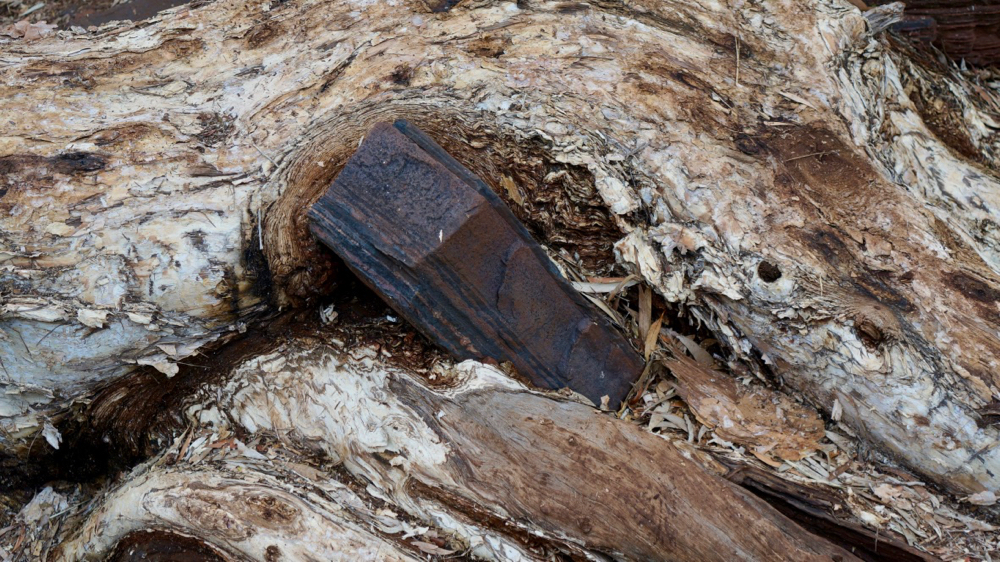
tree against rock. this battle seems far from over but my money is on the tree; one of the fascinating sights on the trail along the bottom of dales gorge. the walk takes about 2 hours with frequent stops for photo opportunities like this one.

blue asbestos naturally occurs here. of course there are warning signs about this as well, although those try to be strangely reassuring. wittenoon on the north boundary of karijini is famous, or more appropriately: infamous, for the mining of asbestos. the industry has been shut down following the discovery of the health impact of asbestos (1). an interesting side note: lang hancock, the discoverer of the pilbara iron started and operated the company mining blue asbestos in wittenoon.
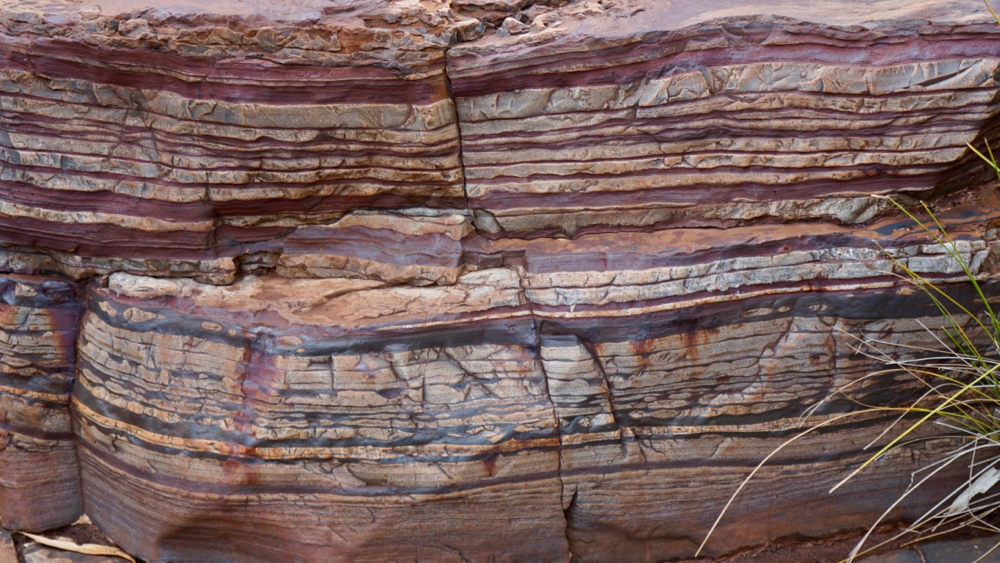
this rock could do with some rust prevention.
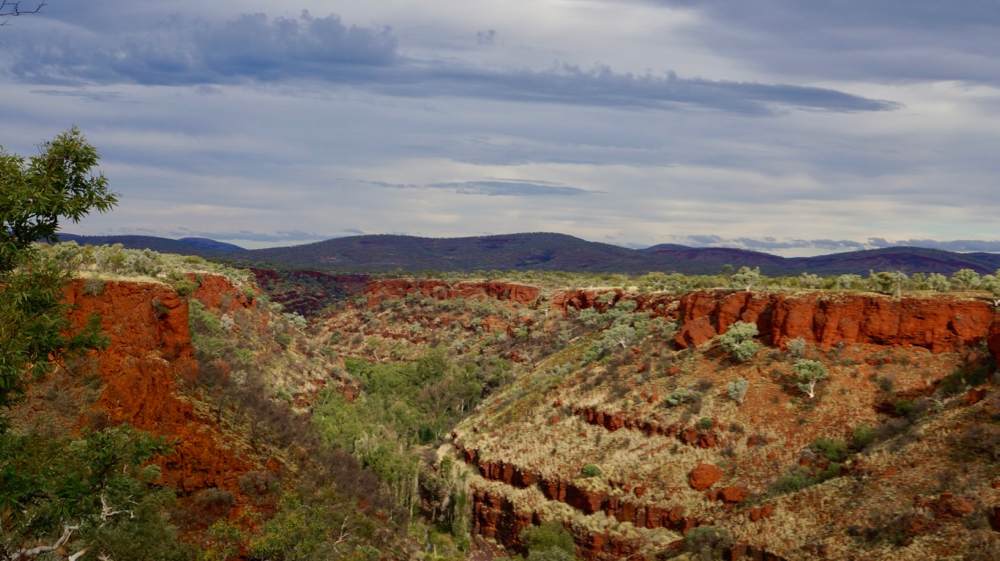
there are a few more gorges to the west, including our favourite, hancock gorge.

with the rain the pilbara received lately we were expecting some issues getting through the gorge. sure enough there was a fair bit of water, not just in standing pools but actually flowing through.

most visitors, who were clearly in the know, turned up in gear that would otherwise raise any experienced bushwalker’s eyebrow: thongs, neoprene sandals and boarder shorts or even neoprene suits.

halfway through the gorge that started to make a lot of sense: to get any further you had to walk through almost waist-deep water. after that the gorge became quite narrow with a deeper channel full of water cutting through it.
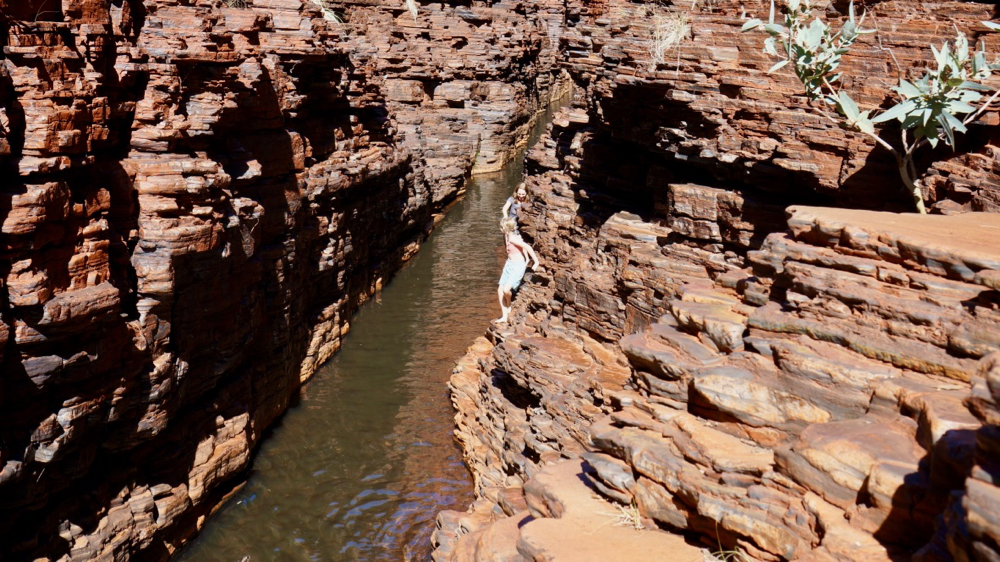
some people swam – we climbed on the rocky ledges on the side.

the water was very cold but the climbing was fun. natalie went back and forth three times, showing other tourists the way. she could have charged for her service.
this really is a magical place: the light filtering down the red walls turning into dark grey where the light does not reach, the green water below.
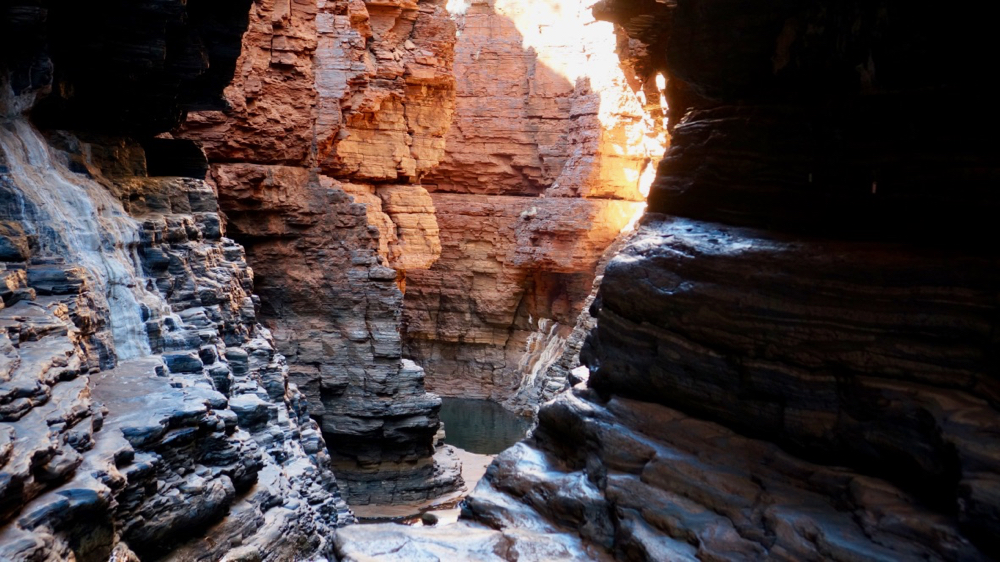
we highly recommend visiting hancock gorge. we don’t think the walk could have been designed better if one tried: it gets more exciting with every step and the chamber at the end is truly amazing. miner or tourist: the most amazing part of the pilbara is what lies beneath.
(1) it actually took a long time for the asbestos industry to accept the health effects, which were known even before mining started here in the 1930ies. and while large sums were paid out in compensation that does not really bring back the people who died of mesothelioma. it’s sadly the same every time, asbestos, tobacco or (probably next) sugar.
